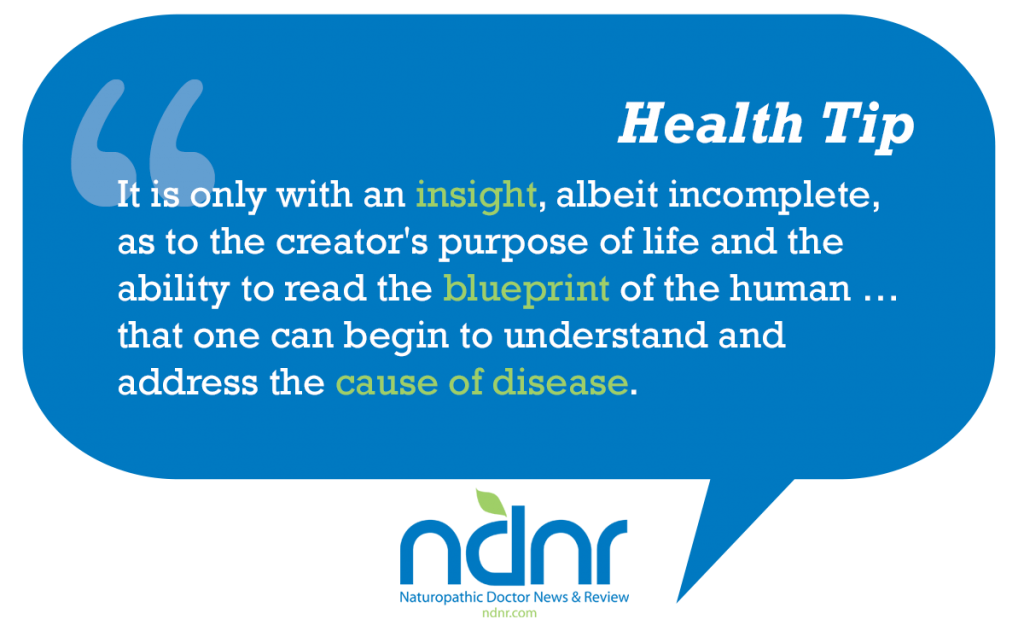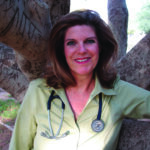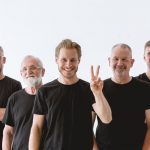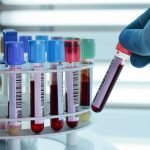The Nature of the Counseling Relationship Within the Philosophy of Naturopathic Medicine
Hanna Ian, NMD, MS
This article explores the dynamics of the counseling relationship specific to naturopathic philosophy. The role of the physician and the responsibility of the patient in the process of healing are central to the discussion of the counseling relationship. The counseling relationship provides a vehicle to approach the symptoms of illness through recognition of and reverence for the blueprint of the human. Ideally the physician will understand and address the cause of illness with the apperception that illness is not random and plays a powerful role as a teaching agent. The physician acknowledges the role the patient plays in his or her healing and provides the patient with the environment and guidance for greater empowerment, authenticity and transformation.
Act With the Healing Powers of Nature
The counseling relationship begins with a reverence for life, the purpose of life and what it means to be human. The architect of the human has created a complex design consisting of emotional, psychological and spiritual components that manifest in the physical form. These components are inseparable from the wholeness and integrity of the human. It is only with an insight, albeit incomplete, as to the creator’s purpose of life and the ability to read the blueprint of the human – in terms of its emotional, psychological and spiritual components – that one can begin to understand and address the cause of disease. That is to say, all disease originates from a basic crisis of spirit, possibly stemming from loss of meaning in one’s life, grief, guilt, an unforgiving heart, contamination through hatred, or loss of self-esteem and personal dignity. Within this perspective, all physical dysfunction being manifest by the body is a reflection of deeper, unresolved spiritual issues.
Within the framework of the counseling relationship is the realization that illness is a powerful teacher, sickness can be the vehicle to re-evaluate the pathways and priorities of one’s life, and disease can be an opportunity for inner growth and transformation. Several years ago I interviewed and collected the oral histories of women who were survivors of breast cancer (Faraclas, 1995). Without exception, each woman’s story unfolded to reveal the crisis of spirit that preceded and accompanied the manifestation of disease.
One woman, whose breast was removed as a result of the breast cancer, related the years of service that she had given to support her husband through his education, followed by her hard undertaking to expand her husband’s business. In addition, she told of all her efforts to solve the family’s financial problems, deal with the emotional upheavals of her adolescent children, interface with her sister’s mental illness and respond to the needs of aging parents who could no longer care for themselves. All of this was the backdrop that preceded her husband’s emotional withdrawal, removal of financial support and proclamation of divorce. As I spoke with her of her self-sacrifice and the image that she was suckling the world, she interrupted me and said, “Yes, and I just wanted to cut it off!” What followed was a shock wave as we both sat speechless with the realization of the metaphor that reflected her life and her ensuing breast cancer.
The stories of women surviving breast cancer are stories of the process of healing from a standpoint of realizing the lessons behind illness and the purpose of life. For many women this was accompanied by resolving old hurts and resentments, learning to forgive, expanding relationships with greater depth, openness and honesty, empowering them to move forward with life – in short, realizing the importance of loving and nurturing themselves. The inner emotional and spiritual experience of the human precedes and, in fact, determines all that is experienced at the physical level of life.
Provide Individualized Treatment
Integrated into the counseling relationship is the role of the physician as the facilitator of healing. The current cultural attitude that disease originates from unseen forces that invade and take over the physical body is coupled with the role of the physician as the hero, the conqueror of disease, with the relentless task to eradicate the ultimate enemy, death. The heroics of modem medicine, which include cloning, genetic alteration, mechanical hearts, organ transplants and chemotherapy, correlate well with the epidemic of the fragmentation of the human spiritual condition.
The history of medicine over the past 100 years is replete with examples of iatrogenic disease (Illich, 1976). The puerperal sepsis epidemic at the turn of the century took the lives of 75% of women giving birth, as a result of invasive and traumatic childbirth practices at the unwashed hands of the physician (Ehrenreich and English, 1978). The fetal limb deformities resulted from mothers taking thalidomide during pregnancy in the late 1950s and early 1960s. Additionally, vaginal adenosis and reproductive cancers span three generations as a result of maternal consumption of the drug diethylstilbestrol in the 1960s. Neither of these drugs had ever been clinically tested as an appropriate therapeutic agent against miscarriage. In the 1970s, doctors prescribed conjugated estrogens tablets for one-third of women over the age of 50, although no research had yet shown the safety of hormone replacement therapy for perimenopausal symptoms. By the mid-1970s, the New England Journal of Medicine published four papers linking estrogens with endometrial cancer (Smith et al., 1975; Ziel and Finkle, 1975; Weiss et al., 1976; Mack et al., 1976). By the early 1990s, despite more than 50 epidemiological and clinical studies and several meta-analyses that considered the effect of estrogen replacement therapy on breast cancer risk, there was still no consensus on which women should not take supplementary estrogen because of a suspected increased risk of breast cancer (Steinberg et al., 1991).
As NDs, the commitment to Primum Non Nocere goes hand in hand with Tolle Causam. While the influence of viral, bacterial, environmental and genetic factors are real and may contribute to the physical manifestation of illness, they do not represent the underlying cause. Illness does not happen randomly and, as stated earlier, understanding the complexity of emotional, psychological and spiritual stresses is crucial to finding the cause. While it may be appropriate at times to treat the symptoms of disease, there is a far greater role of the physician: to be a teacher, a guide and a mentor for the patient, teaching the patient how the natural body works; explaining the physical changes occurring as the result of disease; guiding to help the patient discover the underlying cause of disease; and mentoring the patient to explore the possibility of change, greater authenticity and living more fully within the purpose of life.
A 45-year-old woman of Chinese descent, pregnant with her third child, had been experiencing recurrent diarrhea for two weeks. She sought out my advice, asking if I thought she should be concerned, as her obstetrician had not taken her complaint seriously. I emphatically told her to be concerned, explained the risks of malnutrition to her fetus in these critical weeks of development as well as dehydration, and urged her to call her obstetrician and insist that this be addressed. She was reluctant to do so since her physician had already dismissed her call with the recommendation to “go to the pharmacy and take anything” for the diarrhea. We talked about the role the pharmacist could play in helping her select an appropriate medicine for the symptoms, yet she had no desire to do this. I suggested she call her father, who was a Chinese doctor, now retired, who had a wealth of medicaments that would be helpful to her symptoms. As she declined this suggestion, it became clear to me that what was needed was to find and address the cause, with the recognition that there were not one but two physical manifestations in the lower abdomen; namely, the diarrhea and the pregnancy.
I knew what this pregnancy meant to her. At the age of 40 she had remarried a man ten years her junior. Forty-five is considered a risky age to give birth. Intuitively, I understood her need to weigh this risk associated with her age against her desire to give her young husband a child of his own. I began to ask her about the emotional, psychological and spiritual events that she had experienced since the onset of the pregnancy. We spoke of many things before I asked her if she felt fearful of the future birth. She told me she was waiting for the results of amniocentesis. I asked her when the procedure had been done. Her reply of “two weeks ago” came as no surprise. I asked when she would be informed of the results of the amniocentesis, and she said not for another four weeks. I thought the cause of the diarrhea could be fear of the unknown. I urged her to call her obstetrician at once and insist on a consultation that day or the next, reassuring her that the testing of the amniotic fluid was completed and the results were now in her file. We spoke about the fear of the unknown. I reassured her that once she got the results of the amniocentesis, whether the results were positive or negative for alpha-feto protein (AFP), she would know what she was dealing with, and the issue of fear of the unknown no longer would be present. She made an appointment for the following day, received the news that the results were negative for AFP, and her diarrhea promptly disappeared.
Healthy Living and Preventive Medicine
The counseling relationship also encompasses the role of the patient as an active participant in the healing process. The nature of the doctor-patient relationship is complementary. When disease is viewed as the enemy, randomly striking, then the doctor performs heroic acts on the sick individual who has taken on the role of the powerless victim. In contrast, when disease is viewed as a lesson, never random, ideally the doctor takes on the role of teacher and mentor, and the patient becomes an active participant in the healing process.
Drs. Norman Shealy and Caroline Myss identified eight dysfunctional patterns in people who become sick (1988):
- Unresolved or deeply consuming emotional, psychological or spiritual stress within a person’s life
- Negative belief patterns that have control over a person’s reality
- The inability to give and/or receive love
- A lack of humor and the inability to distinguish serious concerns from the lesser issues of life
- Ineffectively exercising the power of choice in holding dominion over the movement and activities of one’s life
- Not attending to the needs of the body. Additionally, how well an individual attends to the emotional, physical and chemical stresses of life is strongly connected to the degree of vigor and stamina in the physical body itself
- The “existential vacuum,” or the suffering that accompanies the absence or loss of meaning in one’s life
- The tendency toward denial … The inability to face the challenges of one’s life and neither acknowledge nor consciously recognize what it is that is not working in one’s life
Their conclusion is that people directly participate, either consciously or unconsciously, in the creation of their own reality, including the reality of health. Attitudes, emotions, beliefs and an awareness of one’s spiritual self are the tools used in the process of the creation of health. Once this level of awareness is attained, it becomes difficult to allow negativity to go unchallenged in one’s life, since the consequences of disease are understood to be a very real potential outcome to negative emotions.
When my best friend of 25 years told me she had uterine cancer and was scheduled for a complete hysterectomy in five days, I cried. This was not simply a problem of a diseased organ. I believed the cancer was the result of all the fear and insecurity she had experienced over the past 20 years from living on the edge of poverty. I saw the diseased uterus as a physical manifestation of a deep and enduring emotional crisis. We cried together as I spoke to her about the lack of self-worth she has felt as a result of never having any financial power, fear of never having enough, fear and insecurity when her husband refused to get out of bed and go to work for months at a time. I feel that this cancer was caused by her powerlessness and resentment at never having any impact on the emotional climate of her marriage, and living with a man who could not address her emotional or sexual needs. For the first time in 20 years, I called him a two-toed sloth, and from our sobs a little laughter emerged. I begged her to take personal responsibility for her healing seriously, to do the inner work needed to resolve these issues, and to find her source of personal power, lest the cancer reappear in another area in the pelvis later in her life.
Returning to the counseling relationship, the physician is not responsible for the quality of a patient’s health or how successfully a patient heals. The physician is only responsible for providing the best education, the best utilization of appropriate technology, the best treatment with the least harm and the best guidance. The responsibility for healing lies with the patient. It is in the participation with one’s own health and healing that the patient must find the inner road to self‑empowerment, responsibility, inner wisdom and love.
Finally, the counseling relationship provides a vehicle to approach the symptoms of illness through recognition of and reverence for the blueprint of the human. Ideally the physician will understand and address the cause of illness with the apperception that illness is not random and plays a powerful role as a teaching agent. The physician acknowledges the role the patient plays in his or her healing and provides the patient with the environment and guidance for greater empowerment, authenticity and transformation.
 Hanna Ian, NMD, MS has more than 30 years’ experience in the fields of public health, clinical nutrition and women’s health. She has served on the public health faculty of Southern Connecticut State University and as a patient educator for the Department of Obstetrics at Yale-New Haven Medical Center. In addition to her ND degree from SCNM, Dr. Ian also holds a master’s degree in community health education. She is an accomplished writer and has published numerous articles in the field of women’s health, nutrition, mind-body medicine, death and dying. Dr. Ian is also a frequent and sought-after lecturer and teacher on wellness, nutrition and a wide array of health-related topics.
Hanna Ian, NMD, MS has more than 30 years’ experience in the fields of public health, clinical nutrition and women’s health. She has served on the public health faculty of Southern Connecticut State University and as a patient educator for the Department of Obstetrics at Yale-New Haven Medical Center. In addition to her ND degree from SCNM, Dr. Ian also holds a master’s degree in community health education. She is an accomplished writer and has published numerous articles in the field of women’s health, nutrition, mind-body medicine, death and dying. Dr. Ian is also a frequent and sought-after lecturer and teacher on wellness, nutrition and a wide array of health-related topics.
References
Faraclas H: The healthy breast. In Thames S and Gazzaniga M (eds), The Breast Anthology, New York, 1995, Global City Press.
Illich I: Medical Nemesis: The Expropriation of Health. New York, 1976, Random House.
Ehrenreich B and English D: For Her Own Good: 150 Years of the Experts’ Advice to Women. New York, 1978, Anchor Press/Doubleday.
Smith D et al: Association of exogenous estrogen and endometrial carcinoma, N Engl J Med 293(23):1164-7, 1975.
Ziel HK and Finkle WD: Increased risk of endometrial carcinoma among users of conjugated estrogens, N Engl J Med 293(23):1167-70, 1975.
Weiss NS et al: Increasing incidence of endometrial cancer in the United States, N Engl J Med 294(23):1259-1262, 1976.
Mack TM et al: Estrogens and endometrial cancer in a retirement community, N Engl J Med 294(23):1262-1267, 1976.
Steinberg KK et al: A meta-analysis of the effect of estrogen replacement therapy on the risk of breast cancer, JAMA, 265(15):1985-1990, 1991.
Shealy N and Myss, C: The Creation of Health. Walpole, 1988, Stillpoint Publishing










